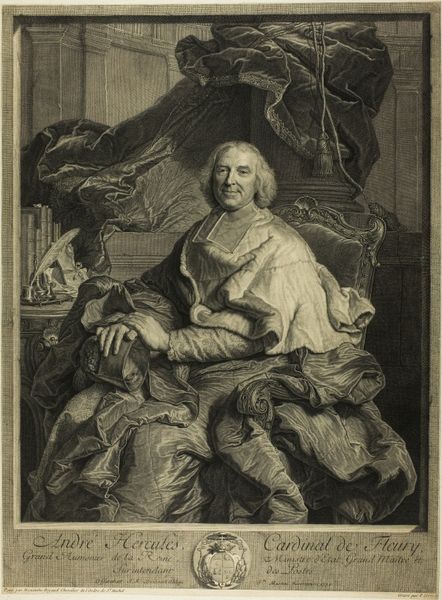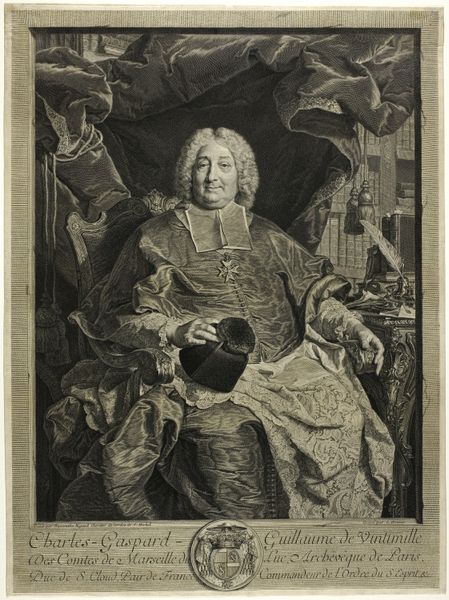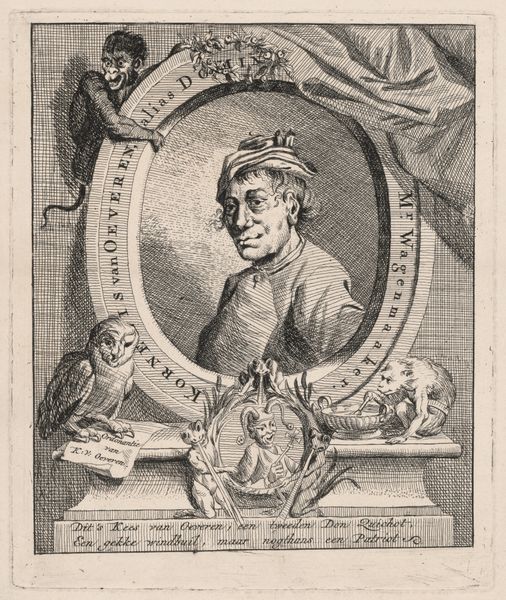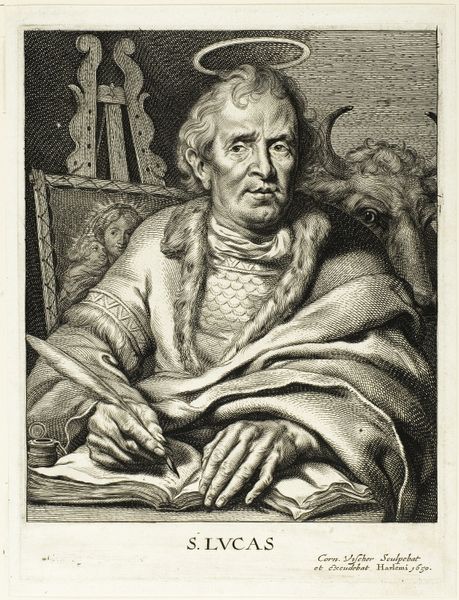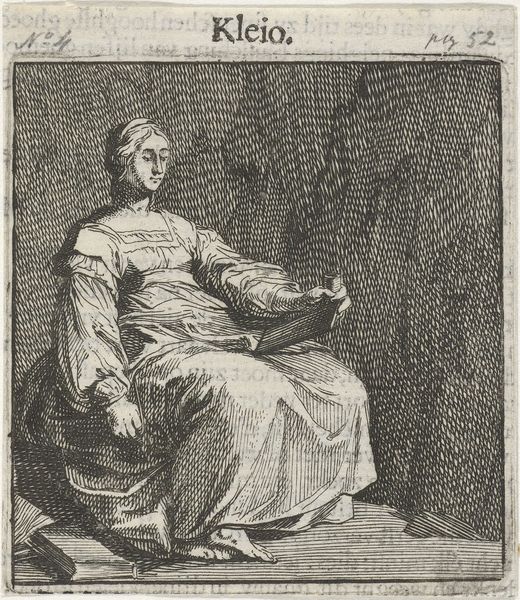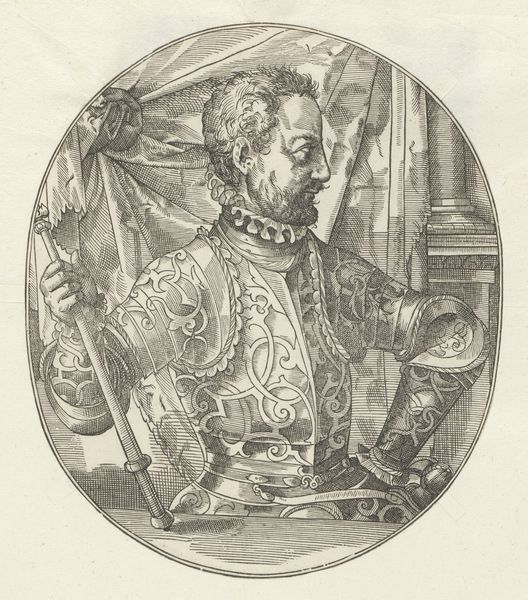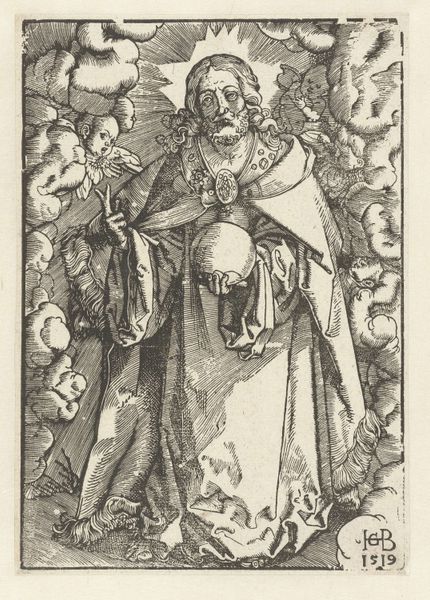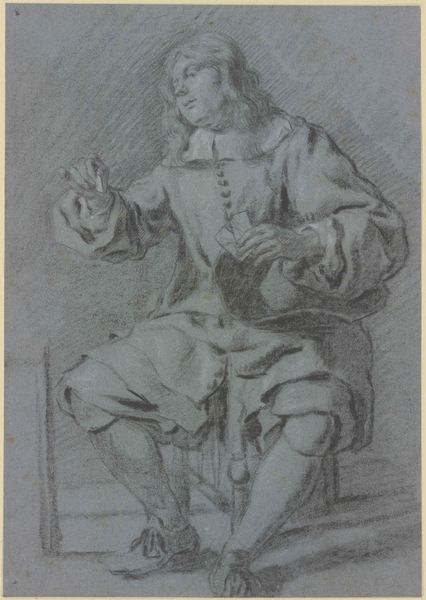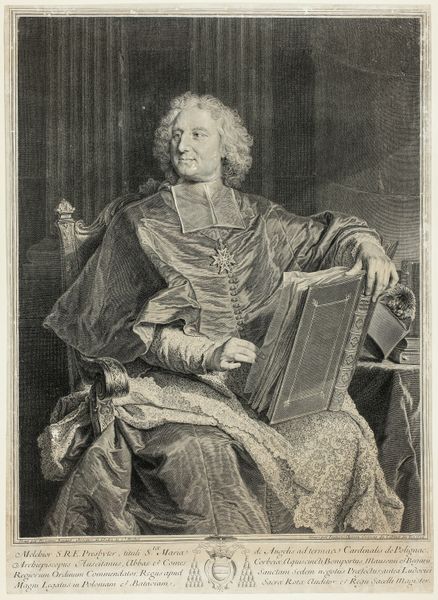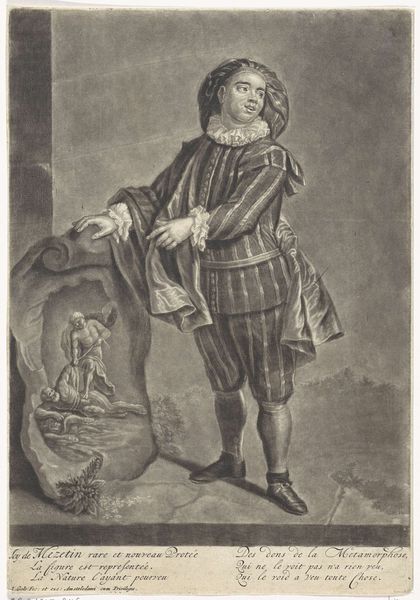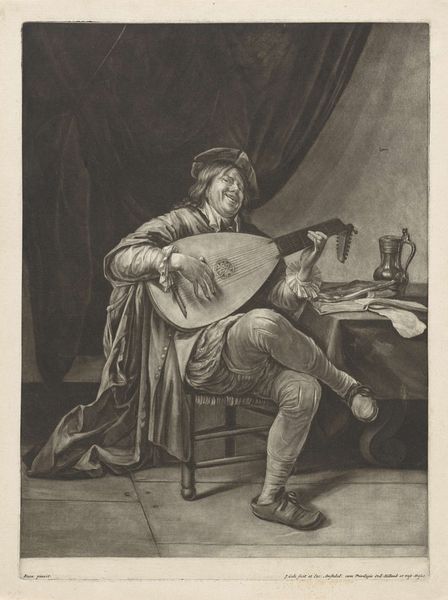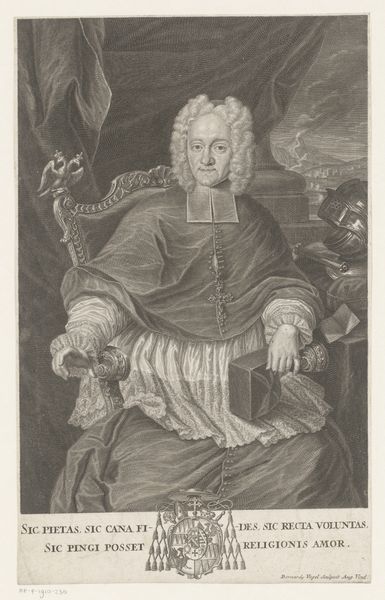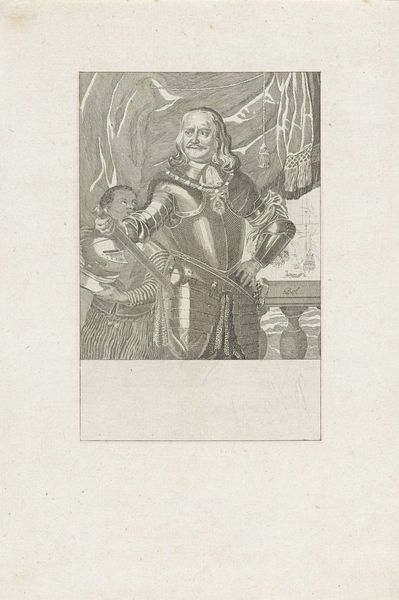
engraving
#
portrait
#
baroque
#
caricature
#
portrait drawing
#
academic-art
#
engraving
Dimensions: height 265 mm, width 202 mm
Copyright: Rijks Museum: Open Domain
Curator: Here we have a work titled "Portret van een onbekende geestelijke," or "Portrait of an Unknown Clergyman," an engraving created sometime between 1702 and 1767, attributed to Jacob Folkema. The print offers us a glimpse into the world of the 18th century. Editor: It's striking. He seems so self-assured, almost imposing, yet there’s something vaguely comical in his expression. I wonder who he was, and why he commissioned this. Or perhaps didn’t commission it! Curator: The “unknown clergyman” aspect is interesting isn't it? The formality suggests the elite societal structures of the time, and yet the artist's subject remains unverified today, raising questions about historical representation and social power. Editor: I immediately noticed the crucifix on the chair's arm, tucked away as almost an afterthought. Is that a genuine expression of his beliefs, or merely a strategic emblem? This, coupled with the Baroque excess—the frills, the curled wig—it all feels carefully curated, doesn't it? How much of his true self did he reveal? Curator: That juxtaposition you highlight is central. Engravings like this were instrumental in disseminating images, shaping perceptions of status, intellect, and religious authority. Folkema, like other artists of the period, navigated the fine line between honoring and potentially satirizing his subjects. Editor: I'm drawn to the composition too. He dominates the frame, yet there's something confined about him, almost trapped within those elaborate garments and that heavy chair. The pose looks conventional, but also uncomfortable to sit like this for so long for an artist to produce a print. What are the power dynamics here? Was this a flattering portrayal, or was there something more subversive going on? Curator: Perhaps both! Folkema was skilled at rendering texture and detail, but what really holds our attention, centuries later, are the inherent ambiguities of the image. Editor: It really prompts me to think about who gets remembered, and how we reconstruct identities from fragments. Art history's never truly settled; this “unknown clergyman” speaks volumes. Curator: Indeed. The work becomes a catalyst, compelling us to interrogate both the subject's life, or imagined life, and the wider context in which such representations held social and cultural weight. Editor: Yes, definitely an intersectional reading of both identity and representation feels like the right approach here.
Comments
No comments
Be the first to comment and join the conversation on the ultimate creative platform.
